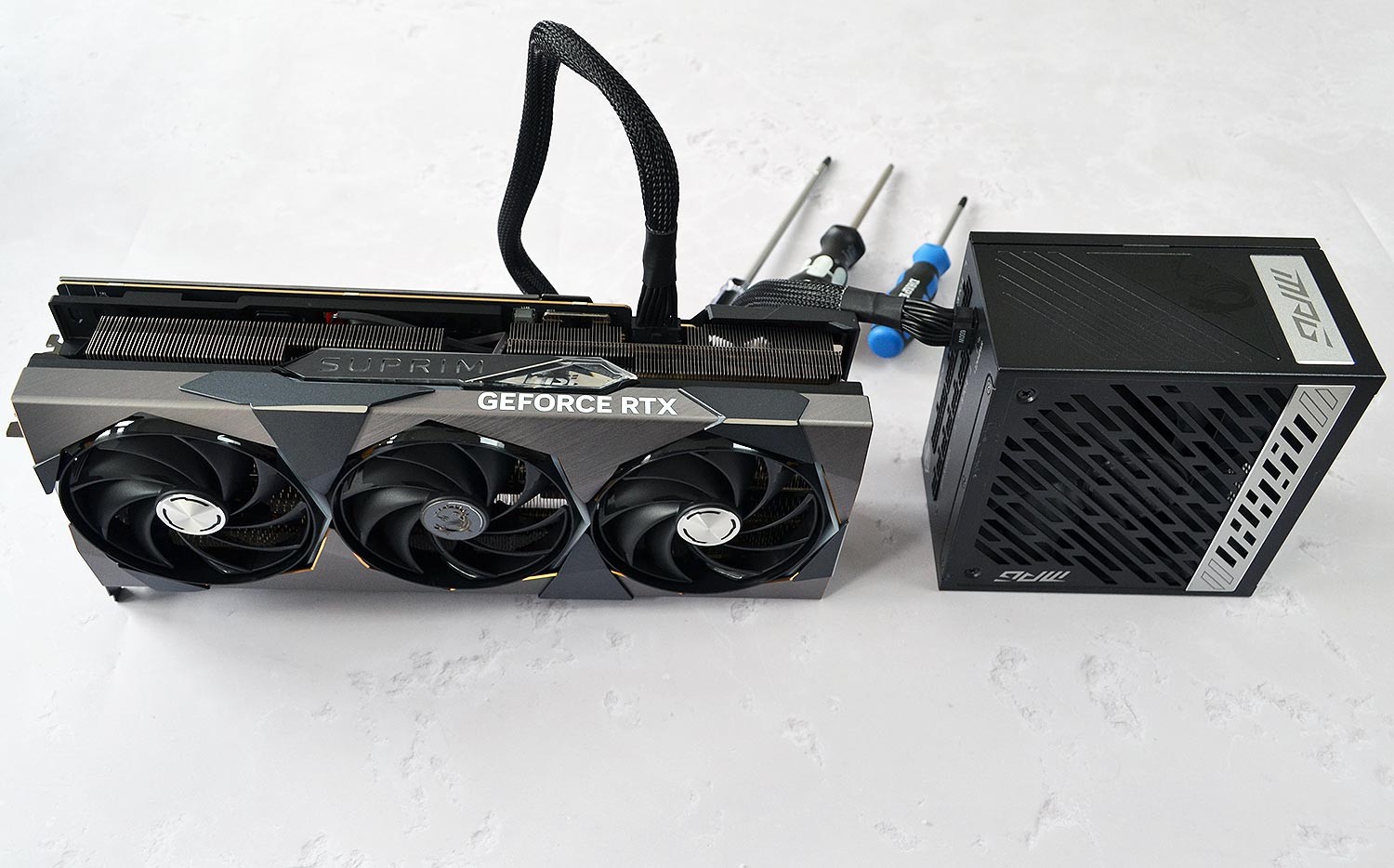
The upcoming NVIDIA GeForce RTX 5090 graphics card might push power requirements to new heights, potentially necessitating two 16-pin power connectors and a high-wattage power supply unit (PSU).
Industry insiders suggest that NVIDIA's next-generation flagship GPU, expected to launch in early 2025, could draw up to 600 watts of power. This substantial power demand has led to speculation about the card featuring dual 16-pin connectors, each capable of delivering up to 600 watts.
MSI, a leading hardware manufacturer, has already unveiled new PSUs designed with this possibility in mind. Their latest models, including the 1600W MEG Ai1600T PCIE5, come equipped with two 12V-2x6 power connectors. These updated 16-pin connectors are poised to replace the older 8-pin PCI-E power standard.
The potential use of dual connectors on the RTX 5090 could offer several advantages. It would allow for more stable power delivery in high-performance systems with multiple components. Additionally, it might help address concerns about power-related issues, such as overheating cables, which have plagued some current-generation cards.
However, this development could present challenges for consumers. If the RTX 5090 indeed requires two 16-pin connectors, users may need to upgrade their PSUs to compatible models like MSI's new offerings. These high-end PSUs boast impressive specifications, including 80 PLUS Titanium efficiency ratings and compact designs, but they represent an additional investment for enthusiasts looking to adopt the latest GPU technology.
While NVIDIA has not officially confirmed these details, the trend towards higher power consumption in high-performance graphics cards seems set to continue. As the gaming and AI industries push the boundaries of GPU capabilities, power requirements are likely to increase accordingly.
Gamers and tech enthusiasts eagerly await further information about the RTX 5090's specifications and power needs. As the anticipated Q1 2025 launch approaches, more concrete details about this next-generation GPU are expected to emerge.